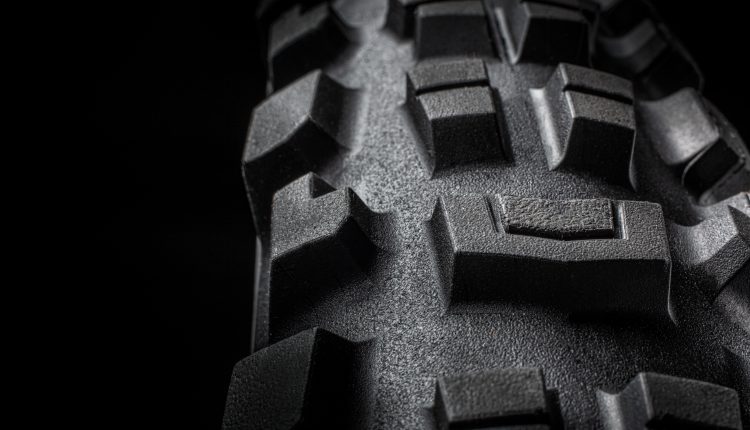


Mountain bike tires are an important component that directly affects your riding experience and your safety on the trails. As an avid mountain biker, “How long should mountain bike tires last?” You may be wondering.
Read More : ” Difference Between Mountain Bike And Gravel Bike ”
The answer to this question depends on many factors, including the type of terrain you ride, your driving style, the quality of your tires, and maintenance practices.
Mountain bike tires can experience significant wear, especially when riding on rough terrain with sharp rocks, roots, and other obstacles. In addition, factors such as tire pressure, frequency of use, and weather conditions can affect its durability.
High-quality tires with durable rubber components last longer, while softer components wear faster but provide better traction.
In this article, we’ll take a look at the main factors that affect the life of your mountain bike tires and provide helpful tips on how to extend their life. Whether you’re a casual cyclist or an adrenaline-seeking mountain biker, understanding the factors that affect tire life will help you make the right decision and get the most out of your mountain biking adventure.
So let’s move on and learn more about how you can maximize the life of your mountain bike tires.
Read More : ” Is Mountain Biking A Good Workout? “
Factors Affecting Mountain Bike Tire Lifespan



Mountain bike tires are essential to ensure a smooth and safe ride over rough terrain. However, their lifespan can vary depending on several factors that drivers should consider to optimize their investment. Understanding these factors will help you take better care of your tires and extend their lifespan.
Related : ” Do Mountain Bike Tires Have Tubes? “
- Terrain and driving conditions:
The type of terrain you often drive on plays a very important role in determining tire wear. Rough, rocky, and muddy roads can accelerate tire wear, while smoother surfaces can extend tire life.
- Tire material and quality:
High-quality tires made from durable materials will last you longer. Investing in a reputable brand known for quality can lead to better performance and longer life.
- Tire pressure:
Proper tire pressure is very important for tire health. Too much or too little pressure can cause increased wear that affects the overall life of the tire.
- Driving style:
Aggressive driving, such as sharp turns and frequent jumps, puts more pressure on tires, shortening their life. Adopting a balanced driving style can help protect your tires.
- Maintenance:
Regular tire maintenance, such as checking for cuts, punctures, and tread wear, is the key to early detection of problems and quick fixes.
- Climate and weather:
Extreme temperatures and UV exposure can damage tire components over time. Keeping your bike in a dry, sheltered place will help protect your tires.
- Frequency of Use:
The more you drive, the faster your tires wear. Consider spinning tires or keeping a spare set for longer runs.
By keeping these factors in mind, you can maximize the life of your mountain bike tires and ensure a safer and more enjoyable ride for years to come.
Read More : ” Difference Between Mountain Bike And BMX “
Understanding Tire Wear on Challenging Terrains
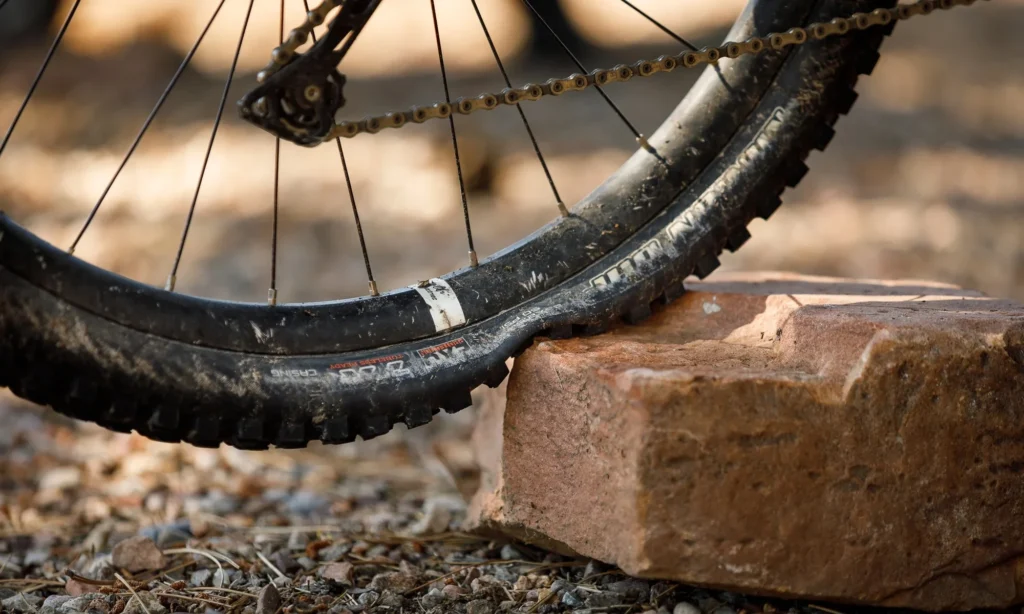


Mountain biking is an exciting adventure, but it also brings challenges, especially when it comes to tire wear. Riding on rough and rough terrain can significantly affect the life of your mountain bike tires. Understanding the factors that cause tire wear can help you take proactive steps to extend tire life and improve your overall driving experience.
Read More : ” Which Cycle Is Best For Mountain? “
- Tread:
The tread design and depth of your tire can affect its performance in a variety of terrains. Tires with an aggressive tread are suitable for loose, muddy surfaces, but can wear out more quickly on smoother roads.
- Tire Pressure:
Proper tire pressure is very important for tire health and durability. Running tires at the correct pressure ensures optimum grip and reduces the risk of jamming or sidewall damage.
- Rock and Root Gardens:
Driving on rocky terrain and navigating tree roots can cause abrasions and punctures. Considering tire placement and using techniques such as rabbit jumping can minimize tire contact with sharp objects.
- Loose sand and gravel:
Loose sand and gravel can quickly abrade tire treads and accelerate tread wear. In these conditions, consider using wider tires with more aggressive tread.
- Braking and cornering technique:
Hard braking and aggressive cornering can put extra stress on the tires, causing them to wear faster. Developing proper driving techniques can help protect your tires.
- Suspension Adjustment:
Properly adjusted suspension can absorb shock more effectively, increasing traction and reducing tire wear.
- Tire Care:
Check tires regularly for signs of wear, tear, or puncture. Replace worn tires immediately to avoid compromising safety and performance.
- Tire Compounds:
Different tire compositions have different levels of wear resistance. For rough terrain, consider choosing a tire with a harder compound.
- Cleaning and Storage:
Clean your tires and bike after every ride, especially after muddy or wet conditions. Store your bike in a dry place to avoid unnecessary exposure to moisture and UV rays.
By understanding the impact of rough terrain on tire wear and taking proactive steps, you can maximize the life of your mountain bike tires for a smoother, safer ride on even the toughest trails.
The Impact of Riding Style on Tire Longevity



As a mountain biker, your riding style plays an important role in the life of your tires. The way you ride your bike over different terrain and how aggressive you look while riding can greatly affect tire wear. Understanding how your driving style affects tire life can help you make the right decisions to optimize your tire performance and durability.
- Aggressive Descent:
If you enjoy climbing steep hills at high speed and with aggressive braking, your tires may wear out faster. Constant braking and skidding can lead to excessive tread wear and even damage to the sidewalls.
- Cornering Technique:
High-speed cornering can put a lot of stress on the tire ball, resulting in faster wear. To prolong tire life, practice smooth, controlled turns by evenly distributing the load on the tire.
- Tire pressure:
Running tires at optimal pressure is essential for performance and durability. Over-inflated tires can lead to reduced traction and increased mid-tread wear, while under-inflated tires can lead to pit compaction and sidewall damage.
- Track Conditions:
Driving on uneven and rocky terrain can cause tire tread wear. Pay attention to road conditions and adjust your driving style to minimize tire wear.
- Jumps and falls:
Frequent jumps and falls can seriously damage your tires. Hard landings and excessive tire compression can damage tires and shorten their life.
- Driving frequency:
The more you drive, the faster tires wear out. Sometimes drivers may need to change tires more frequently, especially when driving aggressively.
- Maintenance:
Proper tire care, such as regularly checking for cuts and punctures and keeping tires clean, can
help prolong their life.
- Tire selection:
Choosing a tire with a durable compound and tread pattern that suits your driving style and road conditions can make a big difference in durability.
- Weight distribution:
Proper weight distribution on a bike can help prevent excessive wear on certain areas of the tire.
By paying attention to your riding style and making the necessary adjustments, you can extend the life of your mountain bike tires and ensure optimum performance and safety during your adventures. Remember to check and maintain your tires regularly for signs of wear or damage and replace them as needed.
With the right approach, you can enjoy miles of exciting driving while keeping your tires alive.
Quality Matters: Choosing Durable Mountain Bike Tires



When it comes to mountain biking, the right tires can make a big difference in your riding experience. Durable mountain bike tires not only perform better, they last longer, save you money, and let you tackle tough trails with confidence.
The main factors to consider when choosing a durable mountain bike tire are:
- Tire Construction:
Look for tires made with high-quality materials and advanced manufacturing techniques. Tires with solid casings and sidewalls are less susceptible to tearing and punctures, which extends their life.
- Tread:
Consider the tread that suits your riding style and the terrain you travel frequently. A well-designed tread not only improves traction but also contributes to tire durability.
- Composition:
Tire composition affects handling and durability. Harder compounds provide better wear resistance on paved roads, while softer compounds increase traction on loose surfaces but may wear out more quickly.
- Width:
Choose tires with the right width for your riding style and terrain. Wider tires generally provide better stability and traction but can increase weight and increase rolling resistance.
- Compatible with tubeless tires:
Tubeless tires are becoming increasingly popular due to their resistance to punctures and their ability to operate at low pressure without the risk of binding. Consider investing in tubeless tires for added durability.
- Reinforcement technology:
Some tires come with additional layers of reinforcement such as Kevlar or EXO protection. This technology provides extra protection against cuts and abrasions and is ideal for aggressive drivers on rocky roads.
- Brand reputation:
Choose well-known brands known for producing high-quality and durable mountain bike tires. Trusted brands invest in research and development to create tires that can withstand the rigors of riding.
- User Reviews:
Reading user reviews can provide valuable information about the durability and performance of a particular tire model under real-world conditions.
- Proper maintenance:
Check your tires regularly for signs of wear or damage. Keeping them nice and fluffy can extend their life.
Remember that durable mountain bike tires can be a worthwhile investment. Focus on quality and choose tires that suit your riding style and terrain preferences. By making the right choices and taking care of your tires, you’ll enjoy your ride more and worry less about flat tires or tire changes, allowing you to focus on the excitement of conquering new trails with confidence.
Tire Maintenance: Extending the Life of Your Treads
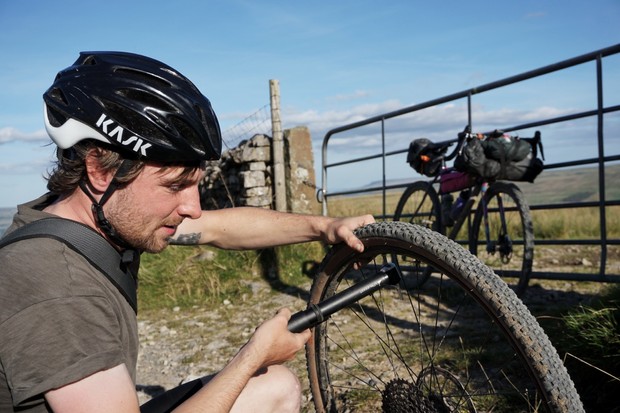


Tires, an integral part of your mountain bike, play an important role in determining your riding experience. Proper tire maintenance not only ensures maximum performance, but also extends tire life, saves you money, and increases overall driving pleasure.
Here are some basic tire care tips to help keep your tread in top condition:
- Regular Inspection:
Check your tires regularly for wear, damage, or adhering debris. Look for cuts, punctures, or damage to the sidewall that could compromise the integrity of the tire.
- Proper inflation:
Maintain proper tire pressure as recommended by the manufacturer. Under-inflated tires are more prone to excessive wear and tear, while over-inflated tires can result in reduced traction and a more difficult ride.
- Tire Rotation:
If your bike allows it, consider rotating your tires regularly to distribute wear more evenly across the tread.
- Cleaning After Riding:
Dirt, mud, and debris can build up on the tires and cause premature wear. Gently wash the tires with mild soap and water after each ride to remove dirt.
- Avoid Harsh Chemicals:
When cleaning tires, avoid using harsh chemicals or solvents which can damage the rubber and weaken the structure of the tire.
- Use sealant for tubeless tires:
If you have tubeless tires, check the sealant level periodically and add more if necessary. This helps maintain puncture protection and prevents air leakage.
- Avoid Overloading:
Be careful not to overload your bike as this can put extra pressure on the tires and cause them to wear out more quickly.
- Store Properly:
When not in use, store your bike in a cool, dry place to avoid exposure to UV rays which can damage rubber over time.
- Pay attention to the terrain:
Adapt your driving style to the terrain you are approaching. Avoid sharp turns on hard surfaces and sharp objects which could cause cuts or punctures.
By following these tire care tips, you can extend the life of your mountain bike tires, ensure they continue to perform well, and ride confidently on all your adventures. Remember, a little maintenance goes a long way toward maintaining the integrity and durability of your bike’s key components, including reliable tread.
Weather Conditions and Tire Wear: What You Need to Know
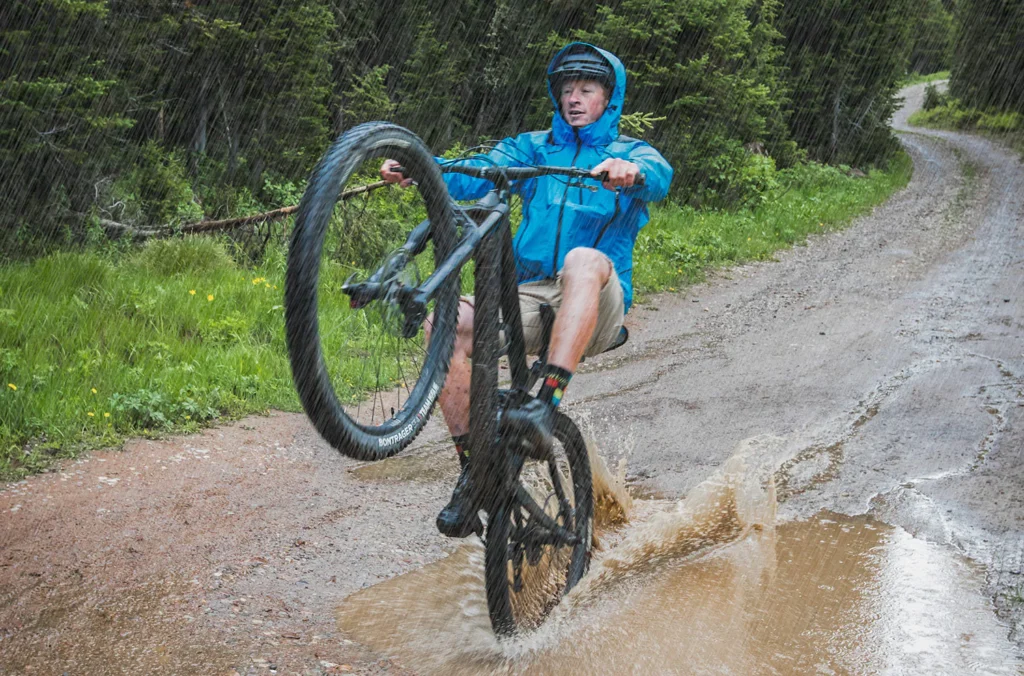


As a mountain biker, you know that weather conditions can make a big difference to your riding experience. From hot summer days to rainy, muddy trails, all weather conditions present a unique challenge for your bike tires.
Understanding how weather affects tire wear is key to maintaining peak performance and safety. Here’s what you need to know:
- Hot and dry weather:
In hot, dry conditions, your tires wear faster due to increased friction and heat generation. It is important to check tire pressure more often and avoid over-inflation to prevent excessive wear.
- Wet and rainy weather:
Driving on wet and muddy roads can accelerate tire wear, especially when the terrain is slippery and rough. Choose tires with deeper treads to increase traction and prevent aquaplaning.
- Snow and winter driving:
Snow and ice conditions require special tires with an aggressive tread pattern for maximum grip. Thick or studded tires can improve stability and handling during winter driving.
- Extreme cold:
Extreme cold temperatures can cause the tire rubber to harden, resulting in reduced traction and increased wear. Keep your tires properly inflated and avoid hard braking to reduce tire damage.
- Debris on the Trail:
Weather conditions can bring debris such as rocks, twigs, and thorns onto the trail, increasing the risk of punctures and injury. Check tires regularly for damage and remove stuck debris.
- Post-trip cleaning:
After driving in bad weather, make a habit of thoroughly cleaning your tires of dirt, grime, and salt residue. This will prevent rapid tire wear and corrosion.
- Tire Selection:
Choose tires according to the weather conditions you frequently encounter. If you’re driving in a variety of weather conditions, consider all-season or multi-purpose tires.
- Convenient Storage:
When you’re not riding, store your bike indoors to protect your tires from extreme weather conditions that can cause premature wear.
Whatever the weather, remember that regular tire maintenance is very important. Check tire pressure, tread wear, and sidewall integrity regularly and replace worn tires promptly to ensure safe and enjoyable driving in all weather conditions.
Considering weather factors and taking care of your tires will increase their durability and performance on your mountain bike adventures.
Signs It’s Time to Replace Your Mountain
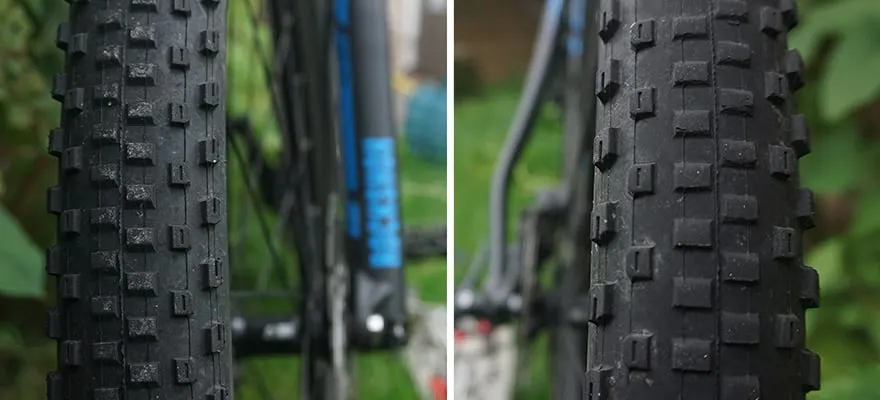


Mountain bike tires are important components that directly affect the efficiency and safety of riding. They are subject to wear over time and knowing when to replace them is key to maintaining peak performance and avoiding potential accidents.
Here are a few signs that it’s time to change the tires on your mountain bike:
- Worn tread:
Check the tread for signs of wear. A worn tread with shallow grooves and a smooth surface reduces traction and increases the risk of slipping, especially on rough terrain.
- Cracks and Cuts:
Check sidewalls for cracks and cuts. Sidewall damage compromises the integrity of the tire and increases the chance of punctures and explosions.
- Punctures and flats:
Frequent punctures and punctures, even after repair, may indicate that a tire has worn out and needs to be replaced.
- Blisters and Bubbles:
Bumps or bubbles on the surface of a tire indicate internal damage or structural weakness and should be replaced immediately to prevent a blowout.
- Dry Rot:
If your tires are cracked or showing signs of dry rot, they may have reached the end of their useful life and should be replaced for safety reasons.
- Loss of traction:
If you notice a significant reduction in traction, especially on familiar trails, this may be due to tire wear and tire replacement is necessary to regain traction and control.
- Constant Vibration:
Excessive vibration while driving can indicate tire unevenness or imbalance, which can lead to unsafe driving conditions.
- Poor performance:
If you’re having trouble maintaining speed or handling, it could be because the tires are so worn out that they need to be replaced.
- Excessive Noise:
Unusual noises while driving, such as clicking, squealing, or thuds, may indicate tire damage or misalignment, which may require tire replacement.
- Tire age:
Even if your tires look good visually, they may need to be replaced if they are several years old. Rubber wears out over time, which affects performance and safety.
Check your tires regularly for these signs to maximize your mountain biking experience and ensure safe riding. When in doubt, see a professional bicycle mechanic for a thorough assessment. Remember that investing in high-quality, durable tires and replacing them on time will improve your performance and keep you safe on track.
Conclusion:
The bottom line is, “How long should mountain bike tires last?” varies depending on factors such as terrain, driving style, tire quality, and maintenance. On average, mountain bike tires should last between 500 and 2,500 miles, although these are general estimates and individual experiences may vary.
It is essential to inspect tires regularly for signs of wear and damage and replace them as necessary to ensure optimum performance and safety.
By monitoring tread wear, sidewall damage, punctures, and other signs discussed above, you can determine when to replace your mountain bike tires. Also, investing in high-quality, durable tires and following proper maintenance practices will extend tire life and improve your driving experience.
Remember that tires in good condition provide better traction, control, and comfort on the trails, allowing you to fully enjoy your mountain biking adventure. Visit your bike mechanic regularly to assess the condition of your tires and get expert advice on choosing the right tires for your riding style and terrain.
As a result, with proper care and attention, your mountain bike tires can deliver peak performance for a fun and safe ride, no matter what challenges you encounter along the way. So keep riding and exploring while keeping an eye on the condition of your tires to get the most out of your mountain biking trip!
FAQs:
How often should I replace mountain bike tires?
Mountain bike tires should be replaced when they show significant signs of wear, such as reduced tread depth, cracks, or punctures, typically after 1,000 to 2,500 miles of riding.
How do you know when to replace MTB tires?
You should replace your MTB tires when you notice significant wear, cracks, or cuts in the tread. Additionally, if the tires lose traction or develop frequent punctures, it’s time for replacement.
How long do tubeless MTB tires last?
Tubeless MTB tires can last anywhere from 2,000 to 6,000 miles, depending on factors like riding style, terrain, tire quality, and maintenance. Regular inspection and care can extend their lifespan.
Do MTB tires wear faster on the road?
Yes, MTB tires wear faster on the road compared to off-road terrain. The smoother surface and higher friction of the road cause increased wear on the tire tread.
Should I replace both mountain bike tires?
It is generally recommended to replace both mountain bike tires at the same time to maintain balanced performance and ensure consistent handling and traction.
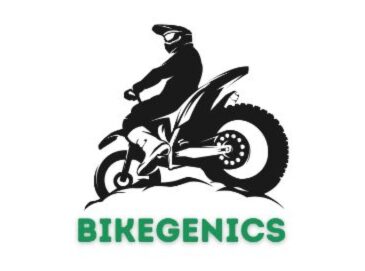


Welcome to Bikegenics, where passion meets performance! We are a leading online destination for all things related to mountain biking, dedicated to providing you with top-notch gear, expert advice, and an immersive community to fuel your two-wheeled adventures. With a commitment to excellence and a deep love for the sport, we strive to elevate your biking experience to new heights.
